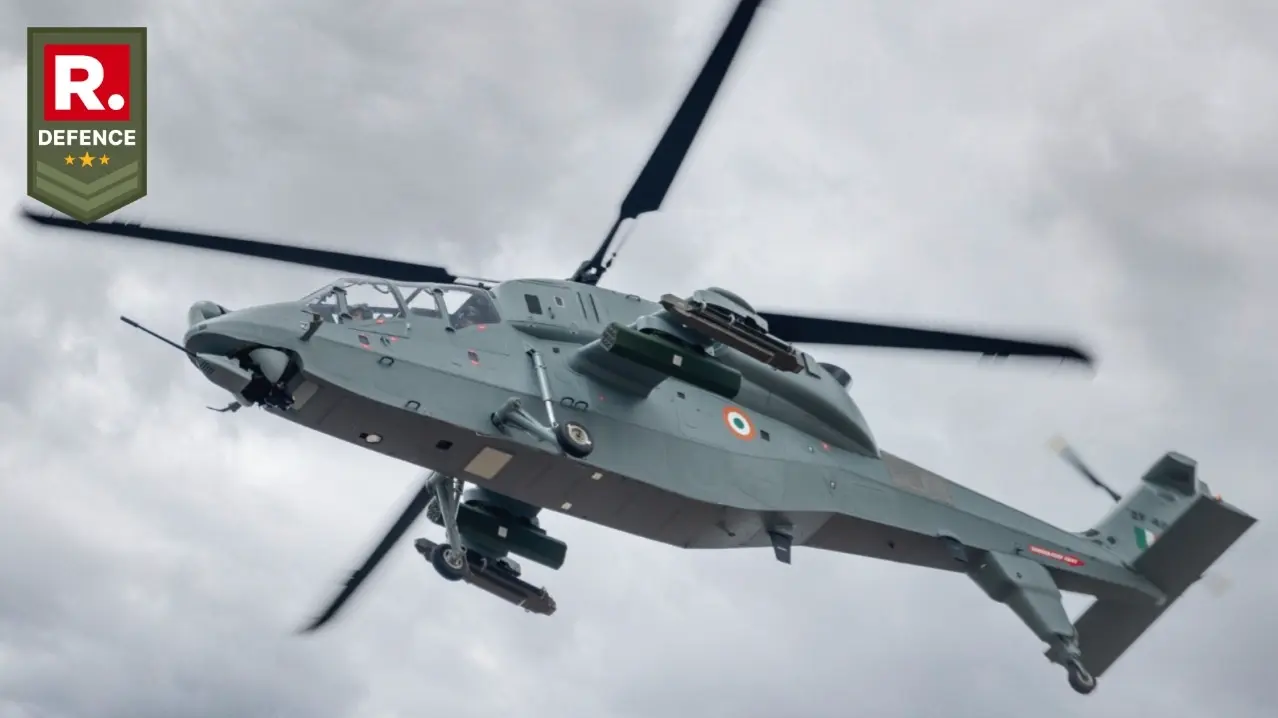Updated 8 April 2025 at 14:32 IST
India’s Combat Helicopter Programme Gets ₹62,500 Cr Boost, Private Sector Enlisted with HAL to Speed Up Production
HAL has opened up ₹25,000 crore worth of production work to the private sector following the Cabinet Committee on Security’s ₹62,500 crore approval.
- Defence News
- 4 min read

Bengaluru, India – In what many see as a long-overdue course correction, Hindustan Aeronautics Limited (HAL) is opening up nearly ₹25,000 crore worth of work to the private sector following the formal clearance of the massive ₹62,500 crore Light Combat Helicopter (LCH) deal by the Cabinet Committee on Security. The agreement, signed with the Defence Ministry on the same day, will see the production of 156 LCHs for the Indian Army and Indian Air Force—airframes that have been a long time in the making but are now under pressure to meet modern combat demands.
For years, HAL has been seen as slow-moving—caught between bureaucratic inertia and its own inability to evolve at the pace required by today’s battlefield realities. Critics argue that while the public sector giant has managed to deliver indigenous airframes like the Dhruv and Tejas, it has often lagged in integrating next-generation sensors, weapon systems, and production efficiencies expected in contemporary warfare.
"This shift to the private sector isn’t just about easing workload—it’s a survival strategy," said a senior defence official closely involved with the LCH project. “HAL has recognised that it can no longer operate in silos. If it wants to stay relevant in high-speed defence production, it needs industry partnerships—and fast.”
Private Firms Like L&T, and VEM Step in to Share the Load
After years of lag in key upgrades, HAL looks to replicate the LCA model for faster, scalable helicopter delivery. This latest move to outsource up to 40% of the LCH work to firms like Larsen & Toubro, VEM Technologies, and others mirrors the Light Combat Aircraft (LCA) Tejas programme, where private partners were brought in to manufacture key components like fuselage sections, wings, and avionics bays. That shift helped speed up production and offset HAL’s capacity limitations—something the LCH deal is expected to mimic.
Advertisement

HAL will manufacture the helicopters at its Bengaluru and Tumkur facilities in Karnataka, but tenders to rope in private firms for sub-assemblies and systems integration are expected to be floated soon. The hope is that this distributed manufacturing model can finally give the LCH its due speed and operational edge—two elements missing in the earlier developmental phase of the platform.
For HAL, this project is more than just a production order—it’s a credibility test. With its order book touching ₹2 lakh crore, and expected orders worth another ₹70,000 crore in the pipeline, including 83 LCA Mk1A jets and 12 Su-30 MKIs, the aerospace PSU can no longer afford the kind of production delays and limited technological adaptability that have haunted past projects.
Advertisement
HAL’s Tech Stagnation No Longer an Option
As future warfare demands faster turnarounds and smarter systems, HAL’s new private push maybe its lifeline. Defence experts argue that while the LCH is a capable platform, it has taken too long to arrive on the frontlines. Designed to operate in high-altitude zones like Siachen and Arunachal Pradesh, the helicopter boasts night-fighting capability, stealth features, and precision weaponry. However, the delays in its full-scale deployment and serial production have meant that India has had to continue relying on imported platforms like the Apache for its frontline attack helicopter needs.
"HAL cannot continue to function like an old-era PSU. In today’s battlefield, decisions need to be swift, systems modular, and integration seamless," said an Air Force veteran who worked closely on rotorcraft acquisitions. "This outsourcing move is both a necessity and a last shot at relevance."

Interestingly, the symbolic presence of Defence Minister Rajnath Singh at the handover of the first rear fuselage for LCA Mk1A, manufactured by Alpha Tocol Engineering, a private Indian firm, wasn’t just about the ceremony. It signalled the Ministry’s growing impatience with sluggish state-run manufacturing and its support for greater private sector infusion into the defence production pipeline.
The LCH deal could become the first large-scale test case for what a truly collaborative public-private defence manufacturing ecosystem looks like. If the HAL-led production line, assisted by private hands, can deliver on time and with required battlefield performance upgrades, it will mark a much-needed revival of faith in India’s indigenous helicopter production capabilities.
Watch- IAF's Light Combat Helicopter
Published By : Yuvraj Tyagi
Published On: 8 April 2025 at 14:32 IST
